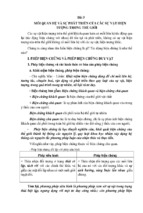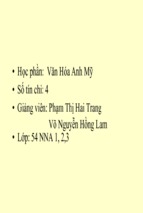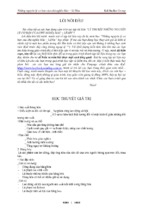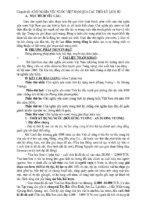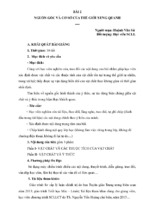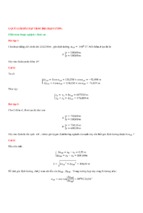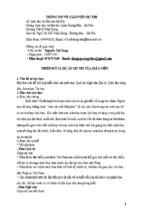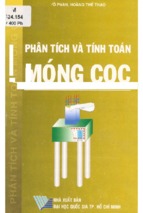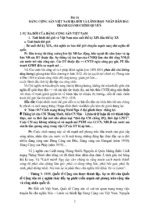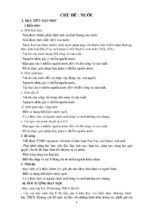d from ascelibrary.org by RMIT UNIVERSITY LIBRARY on 01/04/19. Copyright ASCE. For personal use only; all right
Airfield and Highway
Pavements 2017
Design, Construction,
Evaluation, and
Management of
Pavements
Selected Papers from the Proceedings of the
International Conference on Highway Pavements
and Airfield Technology 2017
Edited by
Imad L. Al-Qadi, Ph.D., P.E.
Hasan Ozer, Ph.D.
Eileen M. Vélez-Vega, P.E.
Scott Murrell, P.E.
Downloaded from ascelibrary.org by RMIT UNIVERSITY LIBRARY on 01/04/19. Copyright ASCE. For personal use only; all rights reserved.
AIRFIELD AND HIGHWAY
PAVEMENTS 2017
DESIGN, CONSTRUCTION, EVALUATION, AND
MANAGEMENT OF PAVEMENTS
PROCEEDINGS OF THE INTERNATIONAL CONFERENCE ON
HIGHWAY PAVEMENTS AND AIRFIELD TECHNOLOGY 2017
August 27–30, 2017
Philadelphia, Pennsylvania
SPONSORED BY
The Transportation & Development Institute
of the American Society of Civil Engineers
EDITED BY
Imad L. Al-Qadi, Ph.D., P.E.
Hasan Ozer, Ph.D.
Eileen M. Vélez-Vega, P.E.
Scott Murrell, P.E.
Published by the American Society of Civil Engineers
Downloaded from ascelibrary.org by RMIT UNIVERSITY LIBRARY on 01/04/19. Copyright ASCE. For personal use only; all rights reserved.
Published by American Society of Civil Engineers
1801 Alexander Bell Drive
Reston, Virginia, 20191-4382
www.asce.org/publications | ascelibrary.org
Any statements expressed in these materials are those of the individual authors and do not
necessarily represent the views of ASCE, which takes no responsibility for any statement
made herein. No reference made in this publication to any specific method, product, process,
or service constitutes or implies an endorsement, recommendation, or warranty thereof by
ASCE. The materials are for general information only and do not represent a standard of
ASCE, nor are they intended as a reference in purchase specifications, contracts, regulations,
statutes, or any other legal document. ASCE makes no representation or warranty of any
kind, whether express or implied, concerning the accuracy, completeness, suitability, or
utility of any information, apparatus, product, or process discussed in this publication, and
assumes no liability therefor. The information contained in these materials should not be used
without first securing competent advice with respect to its suitability for any general or
specific application. Anyone utilizing such information assumes all liability arising from such
use, including but not limited to infringement of any patent or patents.
ASCE and American Society of Civil Engineers—Registered in U.S. Patent and Trademark
Office.
Photocopies and permissions. Permission to photocopy or reproduce material from ASCE
publications can be requested by sending an e-mail to
[email protected] or by locating a
title in ASCE's Civil Engineering Database (http://cedb.asce.org) or ASCE Library
(http://ascelibrary.org) and using the “Permissions” link.
Errata: Errata, if any, can be found at https://doi.org/10.1061/9780784480922
Copyright © 2017 by the American Society of Civil Engineers.
All Rights Reserved.
ISBN 978-0-7844-8092-2 (PDF)
Manufactured in the United States of America.
Airfield and Highway Pavements 2017
iii
Downloaded from ascelibrary.org by RMIT UNIVERSITY LIBRARY on 01/04/19. Copyright ASCE. For personal use only; all rights reserved.
Preface
An ever-growing number of highway and airport agencies, companies, organizations, institutes, and
governing bodies are embracing principles of sustainability in managing their activities and
conducting business. Overarching goals emphasize key environmental, social, economic, and safety
factors in the decision-making process for every pavement project. Therefore, the theme of the
conference was chosen as “Sustainable Pavements and Safe Airports.” It is dedicated to the state-ofthe-art and state-of-practice areas durability, cost-effective, and sustainable airfield and highway
pavements. In addition, recent advancements and technologies to ensure safe and efficient airport
operations are included.
This international conference provides a chance to interact and exchange information with worldwide
leaders in the fields of highway and airport pavements, as well as airport safety technologies. This
conference brought together researchers in transportation and airport safety technologies, designers,
project/construction managers, academics, and contractors from around the world to discuss design,
implementation, construction, rehabilitation alternatives, and instrumentation and sensing.
The proceedings of 2017 International Conference on Highway Pavements and Airfield Technology
have been organized in four (4) publications as follows:
Airfield and Highway Pavements 2017: Design, Construction, Evaluation, and
Management of Pavements
This volume includes papers in the areas of mechanistic-empirical design methods and
advanced modeling techniques for design of conventional and permeable pavements,
construction specifications and quality, accelerated pavement testing, pavement condition
evaluation, and network level management of pavements.
Airfield and Highway Pavements 2017: Testing and Characterization of Bound and
Unbound Pavement Materials
This volume includes papers in the areas of laboratory and field characterization of asphalt
binders, asphalt mixtures, base/subgrade materials, and recent advances in concrete pavement
technology. This volume also features papers for the use of recycled materials, in-place
recycling techniques and unbound layer stabilization methods.
Airfield and Highway Pavements 2017: Pavement Innovation and Sustainability
This volume is dedicated to the papers featuring most recent technologies used for structural
health monitoring of highway pavements, intelligent compaction, and innovative
technologies used in the design and construction of highway pavements. The volume also
includes papers in the area of sustainability assessment using life-cycle assessment of
highway and airfield pavements and climate change impacts and preparation for pavement
infrastructure.
© ASCE
Airfield and Highway Pavements 2017
Downloaded from ascelibrary.org by RMIT UNIVERSITY LIBRARY on 01/04/19. Copyright ASCE. For personal use only; all rights reserved.
Airfield and Highway Pavements 2017: Airfield Pavement Technology and Safety
This volume is dedicated to recent advances in the area of airfield pavement design
technology and specifications, modeling of airfield pavements, use of accelerated loading
systems for airfield pavements, and airfield pavement condition evaluation and asset
management.
The papers in these proceedings are the result of peer reviews by a scientific committee of more than
90 international pavement and airport technology experts, with three to five reviewers per paper.
Recent research was presented in the technical podium and poster sessions including the results from
current Federal Aviation Administration (FAA) airport design, specifications, and safety
technologies; design and construction of highway pavements; pavement materials characterization
and modeling; pavement management systems; and innovative technologies and sustainability. The
plenary sessions featured the Francis Turner Lecture by Dr. Robert Lytton and the Carl Monismith
Lecture by Dr. David Anderson. In addition, two technical tours were offered: Philadelphia
International Airport and the Center for Research and Education in Advanced Transportation
Engineering Systems (CREATEs) Lab of the Henry M. Rowan College of Engineering at Rowan
University.
Three workshops were presented prior to the conference: hands-on FAA’s FAARFIELD software,
design and construction of permeable pavements, and environmental product declarations.
The editors would like to thank the members of the scientific committee who volunteered their time
to review the submitted papers and offered constructive critiques to the authors. We are also grateful
for the work of the steering committee members in planning and organizing the conference: Katie
Chou, Jeffrey Gagnon, John Harvey, Brian McKeehan, Shiraz Tayabji, and Geoffrey Rowe; as well
as the local organizing committee chaired by Geoffrey Rowe and members including James A.
McKelvey, Timothy Ward, Ahmed Faheem, and Yusuf Mehta for their help with the technical tours.
Finally, we would like to especially thank the ASCE T&DI staff who helped put the conference
together: Muhammad Amer, Mark Gable, Drew Caracciolo, and Deborah Denney.
Imad L. Al-Qadi, Ph.D., P.E., Dist. M.ASCE, University of Illinois at Urbana-Champaign
Hasan Ozer, Ph.D., M.ASCE, University of Illinois at Urbana-Champaign
Eileen M. Vélez-Vega, P.E., M.ASCE, Kimley-Horn Puerto Rico, LLC
Scott D. Murrell, P.E., M.ASCE, Applied Research Associates
© ASCE
iv
Airfield and Highway Pavements 2017
v
Contents
Downloaded from ascelibrary.org by RMIT UNIVERSITY LIBRARY on 01/04/19. Copyright ASCE. For personal use only; all rights reserved.
Mechanistic-Empirical Design Method Implementation and Regional Calibration
Comparing Methods for Determining In Situ Asphalt Stiffness Using
Pavement ME .............................................................................................................. 1
N. D. Bech, J. M. Vandenbossche, A. Mateos, and J. T. Harvey
Analysis of Site-Specific MEPDG Traffic Inputs Parameters for the
State of Tennessee in Comparison to National Inputs .......................................... 15
A. Ziedan, M. Onyango, S. Udeh, W. Wu, J. Owino, and I. Fomunung
Effects of Concrete Stiffness on Mechanistic-Empirical Performance of
Unbonded Jointed Plain Concrete Overlay ............................................................ 25
Gauhar Sabih and Rafiqul A. Tarefder
Stability Control of the Unbound Aggregate Base in Multi-Layer
Pavement Structures ................................................................................................ 35
Mojtaba Asadi and Reza S. Ashtiani
Development of Traffic Inputs Library in Pennsylvania for the Use in
AASHTOWare Pavement ME Design Software .................................................... 45
Biplab B. Bhattacharya, Olga Selezneva, and Lydia Peddicord
Recalibration of the Flexible Pavement Rutting Model in Utah .......................... 58
Biplab B. Bhattacharya, Michael I. Darter, Leslie Titus-Glover,
and Steven Anderson
Advanced Modeling and Analysis of Pavements
A Molecular Dynamics Simulation Approach to Predict Release of
Polycyclic Aromatic Hydrocarbons from Asphalt Concrete Pavements ............. 70
M. I. Hossain, J. P. S. Yadavalli, H. M. Azam, and J. Pan
Laboratory Simulation of Extreme Cooling Effects on the Propagation of
Reflection Cracks Using Customized Texas Overlay Tester ................................ 81
T. Mandal, H. Yin, R. Ji, and R. Rutter
Extended Finite Element Modeling of Crack Propagation in Asphalt
Concrete Pavements Due to Thermal Fatigue Load ............................................. 94
M. I. Hossain, A. Adelkarim, M. H. Azam, R. Mehta, M. R. Islam,
and R. A. Tarefder
© ASCE
Airfield and Highway Pavements 2017
vi
Load Format Comparison with StratCalc: A 3D Finite Element Method
Pavement Analysis Model ...................................................................................... 107
Geoffrey Rowe and Sérgio Raposo
Pavement Response to Full Scale and APT
Downloaded from ascelibrary.org by RMIT UNIVERSITY LIBRARY on 01/04/19. Copyright ASCE. For personal use only; all rights reserved.
Effect of Loading Conditions on the Magnitude and Variation of Pavement
Responses in Accelerated Loading Testing .......................................................... 119
Cory Zimmerman
Performance Based Specifications
Effect of Sample Size and Methods on Percent within Limits for Quality
Control and Assurance ........................................................................................... 134
Syed Waqar Haider, Gopikrishna Musunuru, and Karim Chatti
Developing Performance-Related Specifications for Preservation
Treatments—Micro-Surfacing .............................................................................. 145
Syed Waqar Haider, Gopikrishna Musunuru, and Karim Chatti
Pavement Monitoring, Evaluation, and Nondestructive Testing
Modeling a Hybrid Pavement Conditions Performance Framework for
Botswana District Road Transportation Networks ............................................. 156
Adewole S. Oladele
Deep Learning for Asphalt Pavement Cracking Recognition Using
Convolutional Neural Network ............................................................................. 166
Kelvin C. P. Wang, Allen Zhang, Joshua Qiang Li, Yue Fei, Cheng Chen,
and Baoxian Li
Experimental Study on Macrotexture of Asphalt Pavement .............................. 178
Zhi Li, Wenliang Wu, Zhixiong Qiu, and Zhixian Tu
Network Level Performance Indicators
Lessons Learned from the Canadian Agency Implementation of
Transportation Asset Management Systems ........................................................ 191
David K. Hein
Use of Multiple Non-Destructive Evaluation Approaches in Connecticut
to Establish Accurate Joint Repair and Replacement Estimates for
Composite Pavement Rehabilitation ..................................................................... 201
Tamim U. Khan, Steven T. Norton, Katherine Keegan, Jonathan S. Gould,
and Christopher D. Jacques
© ASCE
Airfield and Highway Pavements 2017
vii
A Framework for Maintenance Management of Pavement Networks under
Performance-Based Multi-Objective Optimization............................................. 209
Sakthivelan Ramachandran, C. Rajendran, A. Veeraragavan, and R. Ramya
NDT for Pavement Condition Assessment
Downloaded from ascelibrary.org by RMIT UNIVERSITY LIBRARY on 01/04/19. Copyright ASCE. For personal use only; all rights reserved.
Potential Applicability of Slab Impulse Response (SIR) in Geophysical
Investigation of Pavement Structures ................................................................... 222
Masrur Mahedi, M. D. Sahadat Hossain, Ahmed N. Ahsan, Asif Ahmed,
Mohammad Sadik Khan, and Kelli Greenwood
Field Investigation of Dowel Misalignment at LTPP Sections ........................... 232
Shreenath Rao and Laxmikanth Premkumar
Towards Improved Temperature Correction for NDT Data Analyses ............. 244
M. Broutin and A. Duprey
Pavement Surface Characteristics
Prediction of International Roughness Index of Flexible Pavements from
Climate and Traffic Data Using Artificial Neural Network Modeling .............. 256
M. I. Hossain, L. S. P. Gopisetti, and M. S. Miah
Certification of Inertial Profilers .......................................................................... 268
Rohan W. Perera
© ASCE
Airfield and Highway Pavements 2017
Comparing Methods for Determining In Situ Asphalt Stiffness Using Pavement
ME
Downloaded from ascelibrary.org by RMIT UNIVERSITY LIBRARY on 01/04/19. Copyright ASCE. For personal use only; all rights reserved.
N. D. Bech1; J. M. Vandenbossche2, Ph.D., P.E.; A. Mateos3;
and J. T. Harvey, Ph.D., P.E.4
1
Dept. of Civil and Environmental Engineering, Univ. of Pittsburgh, 713 Benedum
Hall, 3700 O’Hara St., Pittsburgh, PA 15261. E-mail:
[email protected]
2
Dept. of Civil and Environmental Engineering, Univ. of Pittsburgh, 705 Benedum
Hall, 3700 O’Hara St., Pittsburgh, PA 15261. E-mail:
[email protected]
3
Pavement Research Center, 1353 South 46th St., Building 480, Richmond, CA
94804. E-mail:
[email protected]
4
Dept. of Civil and Environmental Engineering, Univ. of California, Davis, 3153
Ghausi Hall, One Shields Ave., Davis, CA 95616. E-mail:
[email protected]
Abstract
The in-situ asphalt stiffness master curve is a critical input for flexible pavement
design. The master curve can be established directly by performing dynamic modulus
testing on field cores, predicted using the volumetrics of the mixture, binder grade
and aggregate gradation established using field cores, or backcalculated using falling
weight deflectometer testing. There can be significant differences between the master
curves established using these three different methods. The effects of these
differences on design were compared using distress predicted by the asphalt
pavement design module in Pavement ME. It was found that the method used to
determine the in-situ asphalt stiffness can have a significant effect on the predicted
distress.
Introduction
There are three primary methods for determining the in-situ stiffness of the asphalt
for an in-service pavement. A master curve that describes the dynamic modulus of
the asphalt concrete as a function of load frequency and temperature can be
developed using data from dynamic modulus testing performed on cores pulled from
the pavement (AASHTO T 342). A dynamic modulus master curve can also be
estimated based on the volumetrics, gradation, and binder grade of the asphalt
mixture using a predictive equation, such as the Witczak, Hirsch, or Al-Khateeb
equations (Andrei, et al., 1999, Bari, 2005, Christensen, et al., 2003, Al-Khateeb, et
al, 2006). Artificial neural networks have also been used to predict dynamic modulus
from asphalt mixture parameters (Ceylan, et al., 2007, Kim, et al., 2015). Finally, the
modulus can be backcalculated using falling weight deflectometer (FWD) data.
© ASCE
1
Airfield and Highway Pavements 2017
Downloaded from ascelibrary.org by RMIT UNIVERSITY LIBRARY on 01/04/19. Copyright ASCE. For personal use only; all rights reserved.
Differences between the three methods for determining in-situ asphalt stiffness were
evaluated using data collected at the Minnesota Road Research Facility (MnROAD).
Asphalt concrete cores were pulled and dynamic modulus tests were performed to
establish master curves. Additional cores were taken and their volumetric parameters
were used to estimate dynamic modulus master curves using the Witczak equation.
Finally, moduli backcalculated from FWD testing were used to estimate dynamic
modulus master curves. The effect of the difference in the estimated moduli on
predicted performance was then evaluated using Pavement ME.
Background
Each of the three approaches for establishing the in-situ asphalt stiffness has
advantages and disadvantages. Performing dynamic modulus testing on cores pulled
from the in-service pavement (AASHTO T 342) is the best means for measuring the
“true” asphalt stiffness over a range of temperatures and frequencies. However, it is
very expensive and time consuming to perform. Also, dynamic modulus test
specimens are only 151 mm thick, so the entire thickness of the asphalt layer is not
tested if it is greater than 151 mm thick.
The use of predictive equations, such as the Witczak or Hirsch equations, is a more
cost effective method for establishing the dynamic modulus. The Witczak equation is
based on two volumetric parameters of the asphalt mixture (percent air voids (Va),
and volumetric effective binder content (Vbe)), the characteristics of the aggregate
gradation (P38, P34, P4, and P200), and the binder grade (Andrei et al., 1999). These
parameters can be determined from destructive testing of field cores or historic
mixture design information. Predictive models, however, do not provide an exact
measure of the dynamic modulus. The Witczak equation was developed using labmixed, lab-compacted, undamaged asphalt specimens. Additionally, many of the
dynamic modulus tests used to fit the Witczak model were performed diametrically,
whereas the current dynamic modulus test (AASHTO T342) uses axial loading
(Andrei, et al., 1999). All of these factors can contribute to a difference between the
dynamic modulus predicted using the Witczak equation and the dynamic modulus
measured in the lab. It is worth noting that even if the use of the Witczak equation
does not provide a “true measure” of the dynamic modulus, it is possible that this
method provides the most realistic predicted pavement thicknesses when using
Pavement ME for design. This is because the calibration of the performance
prediction curves was performed using dynamic moduli established primarily using
the Witczak equation (ARA, 2004).
The stiffness of the asphalt can also be backcalulated from FWD data. This stiffness
corresponds to the temperature of the asphalt at the time the FWD testing is
performed and to the load frequency of the FWD. Moduli backcalculated from
deflection data collected when the asphalt pavement is at different temperatures can
be used to “calibrate” a master curve developed using the Witczak equation. First,
the Witczak equation and the measured volumetric and aggregate properties of the
asphalt mix are used to construct a dynamic modulus master curve that describes the
asphalt stiffness as a function of load frequency and temperature. This master curve
is then used to determine the dynamic modulus at the temperature of the asphalt layer
when the FWD testing was performed. Finally, the load frequency can be established
© ASCE
2
Airfield and Highway Pavements 2017
by determining the frequency that provides a shift in the master curve estimated using
the Witczak moduli, such that this master curve is equal to the moduli backcalculated
from FWD testing. Backcalculation can be performed quickly and cost effectively,
but requires accurate layer thickness measurements and appropriate seed moduli.
Downloaded from ascelibrary.org by RMIT UNIVERSITY LIBRARY on 01/04/19. Copyright ASCE. For personal use only; all rights reserved.
Several studies have evaluated the relationship between the different methods for
establishing in-situ asphalt stiffness (Clyne, et al., 2004, Loulizi, et al., 2007, Mateos,
et al., 2012). Master curves obtained from performing dynamic modulus testing on
field cores and through backcalculation using Evercalc 5.0 were compared for three
pavement sections at MnROAD (Clyne et al., 2004). Testing was performed on Cells
33, 34 and 35 of the Low Volume Road. Each cell had a 100-mm thick asphalt
concrete layer over a 300-mm thick granular base. A load frequency of 17.9 Hz was
assumed for the Dynatest FWD based on measurements from embedded strain
gauges. The backcalculated modulus was found to be lower than the dynamic
modulus measured in the lab for asphalt temperatures between 0oC and 40oC. Cells
34 and 35 showed that variability in the backcalculated moduli within cells was
largest at temperatures less than 10oC.
In another study, master curves established using data from dynamic modulus testing
performed on cores were compared to master curves predicted using the Witczak
equation and to moduli backcalculated using ELMOD (Loulizi, et al., 2007). Cores
were taken from nine different pavements in Virginia. A load frequency of 5.3 Hz
was assumed based on a FWD load pulse duration of 0.03 seconds. This is over three
times less than the frequency assumed in the previous study. The type of FWD used
in this study was not provided, but it can be inferred from the load duration that it was
a Dynatest. The dynamic moduli predicted using the Witzcak equation were greater
than lab-measured dynamic moduli for frequencies greater than 0.0001 Hz and at a
reference temperature of 21.1oC. Additionally, the backcalculated moduli, averaged
over each pavement section, were lower than dynamic moduli predicted using the
Witczak equation.
In a study performed by Mateos et al., the dynamic moduli measured on field cores
and the moduli backcalculated using EVERCALC 5.0 were compared for four new
pavement sections on the CEDEX test track in Madrid (Mateos, et al., 2012). The
four sections had asphalt layers between 120 mm and 150 mm thick and granular
bases between 500 mm and 1000 mm thick. A load frequency of 15 Hz was assumed
for the KUAB FWD used in this study. The average backcalculated moduli were
roughly equivalent to the dynamic moduli measured from the field cores. There was
moderate variability among the backcalculated moduli within each section. For
instance, two FWD tests performed on the same newly-placed section at 17oC
resulted in backcalculated moduli of 4 GPa and 5 GPa.
This study will further evaluate the difference between the dynamic moduli estimated
for in-service pavements. The effect these differences have on the performance
predicted using Pavement ME is also investigated.
Data Sources
Data from MnROAD Cells 15, 16, and 21 were used to establish stiffness vs.
temperature relationships using each of the methods described above (MnDOT,
© ASCE
3
Airfield and Highway Pavements 2017
4
2016). These cells experienced traffic diverted from Interstate 94 and travelling at
highway speeds. All cells were constructed in 1993 and removed in 2008 (Johnson,
et al., 2009). The pavement structure for each cell is detailed in Table 1.
Downloaded from ascelibrary.org by RMIT UNIVERSITY LIBRARY on 01/04/19. Copyright ASCE. For personal use only; all rights reserved.
Table 1: Pavement structure of MnROAD cells
Ave. Asphalt Thickness (mm)
Base Thickness (mm)
Cell 15
280
0
Base Material (MnDOT, 2016)
N/A
Subgrade AASHTO
Classification
Depth to Rigid Layer (m)
Cell 16
200
710
Class 3. Sp.
Granular Base
Cell 21
200
580
Class 5 Sp.
Granular Base
A-6
A-6
A-6
3.9
4.0
3.5
The dynamic modulus was measured for four cores pulled from Cell 21. A master
curve was based on the average of these four cores. Additional cores were taken from
each section and in-situ volumetrics and aggregate gradations for each asphalt mix
were measured using destructive testing. The binder grade for each asphalt mix was
determined from original mixture designs. Additionally, representative complex
modulus and phase angle data for each binder grade were determined by testing
extracted binder. This information is detailed in Table 2. All asphalt mixtures are
dense-graded. FWD testing was performed and the asphalt temperature was
measured using thermocouples. Backcalculation of the FWD data was performed
using Evercalc 5.0. A stiff layer was assumed, and the depth to the stiff layer was
obtained using the “line of influence” method (Rhode and Scullion, 1990). Seed
values were based on typical seasonal values for MnROAD materials (Ovik, et al.
2000). Moduli were backcalculated at two stations within each cell.
Table 2: Asphalt mix parameters of MnROAD cells
Cell
Asphalt Lift
Thickness (mm)
Binder Grade
1
33
15
2
108
3
143
AC-20 (PG 64-22)
1
40
16
2
83
3
79
AC-20 (PG 64-22)
21
1
2
3
36
81
79
Pen 120/150
(PG 58-28)
Air Voids (Va)
8.3
9.9
7.9
5.4
8.1
9.6
4.2
5.6
6.8
(%)
Effective Binder
10.5 10.4 10.9 10.3
9.9
10.0 11.8 11.7 11.4
Content (Vbe) (%)
P38 (%)
100
100
99.9
P34 (%)
85.6
84.3
84.3
P4 (%)
69.5
68.2
68.6
P200 (%)
4.40
4.53
4.76
Note: Gradation information represents entire asphalt core. Gradation information for
individual lifts was not available.
© ASCE
Airfield and Highway Pavements 2017
5
Downloaded from ascelibrary.org by RMIT UNIVERSITY LIBRARY on 01/04/19. Copyright ASCE. For personal use only; all rights reserved.
In order to exclude the effects of damage and compaction due to traffic on the asphalt
stiffness, only FWD test data collected at mid-lane was used. The assumption that
there was minimal damage at the mid-lane locations was confirmed through distress
surveys (MnDOT, 2016). Very little fatigue cracking was observed in any of the
cells, but significant longitudinal cracking in the wheelpath and transverse cracking
was observed in all cells. Furthermore, the effect of binder aging on asphalt concrete
stiffness was accounted for by using FWD data collected between 1996 and 2005.
All cells were constructed in 1993, and it was assumed that any significant increase in
asphalt concrete stiffness due to binder aging would have occurred by 1996 when
FWD testing was started.
The load frequency of the Dynatest FWD used at MnROAD was assumed to be 30
Hz, since this is the recommended value provided by the developers of Pavement ME
(Rao and Von Quintus, 2016). It should be noted that this value is substantially
higher than what was used in the previous studies presented above.
Direct Comparison of Methods
Plots comparing the three methods for determining in-situ asphalt stiffness are shown
in Figures 1, 2, and 3 for Cells 15, 16, and 21, respectively. The modulus was
backcalculated at two different locations in each cell. It was also predicted using the
Witczak equation based on the volumetrics and aggregate gradations obtained from
testing field cores and binder grades from original mixture designs. Prediction
intervals for the stiffness estimated using the Witczak equations were generated as
well (Andrei, et al., 1999). For Cell 21, cores were pulled at mid-lane in 2001 so that
dynamic modulus testing could be performed. Dynamic moduli measured in the lab
and predicted using the Witczak equations were used to establish master curves. The
30-Hz FWD load frequency was used with these master curves to generate the
stiffness vs. temperature curves shown in Figures 1 through 3.
Witczak Predicted
Stiffness using
Volumetrics from Cores
(2001)
Witczak Stiffness 50%
Prediction Interval
16
14
Modulus (GPa)
12
10
Witczak Stiffness 95%
Prediction Interval
8
6
Mid-lane Backcalculated
Stiffness - Station 119620
(1996-2005)
4
2
0
-10
0
10
20
30
o
Temperature ( C)
40
50
Mid-lane Backcalculated
Stiffness - Station 119770
(1996-2005)
Figure 1: Methods for determining in-situ asphalt stiffness, MnROAD Cell 15
© ASCE
Airfield and Highway Pavements 2017
6
16
Witczak Predicted
Stiffness using
Volumetrics from Cores
(2001)
Witczak Stiffness 50%
Prediction Interval
14
12
Downloaded from ascelibrary.org by RMIT UNIVERSITY LIBRARY on 01/04/19. Copyright ASCE. For personal use only; all rights reserved.
Modulus (GPa)
10
Witczak Stiffness 95%
Prediction Interval
8
6
Mid-lane Backcalculated
Stiffness - Station
120415 (1996-2005)
4
2
0
-10
0
10
20
30
o
Temperature ( C)
40
50
Mid-lane Backcalculated
Stiffness - Station
120465 (1996-2005)
Figure 2: Methods for determining in-situ asphalt stiffness, MnROAD Cell 16
Stiffness from Lab
Testing of Field Cores
(2002)
16
14
Witczak Predicted
Stiffness using
Volumetrics from Cores
(2001)
Witczak Stiffness 50%
Prediction Interval
Modulus (GPa)
12
10
8
Witczak Stiffness 95%
Prediction Interval
6
4
Mid-lane Backcalculated
Stiffness - Station 122995
(1996-2005)
2
0
-10
0
10
20
30
40
50
Mid-lane Backcalculated
Stiffness - Station 123345
(1996-2005)
Temperature (oC)
Figure 3: Methods for determining in-situ asphalt stiffness, MnROAD Cell 21
The backcalculated moduli are similar to those established using the Witczak
equation for Cell 15, but there is a difference observed between the moduli obtained
using these two methods in Cells 16 and 21. Here, the backcalculated moduli are
lower than the moduli established using the Witczak equation at all asphalt
temperatures. This trend is consistent with a study performed by Clyne et al. (2004)
for cells on the Low Volume Road at MnROAD. The backcalculated moduli are
similar to the moduli obtained from dynamic modulus testing performed on cores for
© ASCE
Airfield and Highway Pavements 2017
Cell 21. This trend agrees with observations made at the CEDEX test track (Mateos
et al., 2012), but not with observations by Clyne et al. (2004). Finally, the Witczak
moduli are greater than the moduli from laboratory testing for Cell 21. This is
consistent with observations made at sections in Virginia (Loulizi et al., 2007).
Downloaded from ascelibrary.org by RMIT UNIVERSITY LIBRARY on 01/04/19. Copyright ASCE. For personal use only; all rights reserved.
Comparison of Methods Using Pavement ME
The Pavement ME flexible pavement design module was used to quantify the effect
of the differences between methods for determining asphalt stiffness on the predicted
performance. Each cell was evaluated in Pavement ME using the pavement
structures summarized in Table 1. For a Level 1 analysis, Pavement ME uses
statistical regression to construct the master curve using the measured dynamic
modulus of the asphalt concrete and complex modulus and phase angle of the binder.
For a Level 3 analysis, Pavement ME constructs the master curve using dynamic
moduli estimated using the Witczak equation (ARA, 2004).
For the dynamic moduli measured in the laboratory, the moduli were entered directly
into the Pavement ME Level 1 stiffness input field. The complex modulus and phase
angle data measured for the extracted binder were used as Level 1 binder inputs.
When using the Witczak equation to establish the dynamic modulus, the mixture
volumetrics and gradations were entered in the Level 3 stiffness input fields and the
binder grade was selected using the drop-down menus. Volumetrics and aggregate
gradation data were entered separately for each sub-layer in the asphalt.
“Calibration” was required to convert the backcalculated moduli to Level 1 inputs for
Pavement ME. First, a master curve representative of the in-situ asphalt was created
using the Witczak equation and the volumetrics, aggregate gradation, and binder
grade for each asphalt lift. Next, the backcalculated moduli and dynamic moduli
predicted by the representative master curve were plotted on the same set of stiffness
vs. temperature axes. Finally, the frequency at which the dynamic moduli were
predicted was changed until the dynamic moduli were approximately equal to
backcalculated moduli at equal temperatures. This “matching frequency” was found
to be 1.08 Hz for Cell 21, Station 122995, as shown in Figure 4.
© ASCE
7
Airfield and Highway Pavements 2017
8
16
Witczak Predicted
Stiffness at 30 Hz
14
Modulus (GPa)
Downloaded from ascelibrary.org by RMIT UNIVERSITY LIBRARY on 01/04/19. Copyright ASCE. For personal use only; all rights reserved.
12
10
Witczak Predicted
Stiffness at 1.08 Hz
8
6
Midlane
Backcaclulated
Stiffness - Station
122995 (1996-2005)
4
2
0
-10
0
10
20
30
Temperature (oC)
40
50
Figure 4: Adjusting frequency so Witczak predicted moduli match backcalculated
moduli. MnROAD Cell 21, Station 122995
The representative master curve was then used to create a matrix of dynamic moduli
at various temperatures and frequencies that could be used as Level 1 Pavement ME
inputs. The frequencies for this matrix were shifted an amount equal to the
logarithmic difference between the frequency used to predict dynamic modulus with
the Witczak equation (30 Hz in Figure 4) and the “matching frequency.” This master
curve calibration procedure was performed for each station where moduli were
backcalculated and separate Pavement ME analyses were then conducted for each
station. The matching frequencies for all the stations analyzed are shown in Table 3.
The average matching frequency for Cell 15 is significantly higher than for Cells 16
and 21, which have roughly equal matching frequencies. This trend correlates with
asphalt concrete layer thickness. Cell 15 has 284 mm of asphalt, which is more than
Cells 16 or 21, which have 202 mm and 196 mm of asphalt, respectively.
Table 3: “Matching frequencies” for stations used in Pavement ME analysis
Cell
15
15
16
16
21
21
© ASCE
Station
119620
119770
120415
120465
122995
123345
Matching Frequency (Hz)
14.6
15.4
0.305
0.257
1.08
0.365
Airfield and Highway Pavements 2017
9
The Pavement ME inputs for Cell 21 for the dynamic modulus testing on field cores,
Witczak equation, and backcalculation methods are summarized in Tables 4 through
7. Pavement ME inputs for Cells 15 and 16 followed the same format.
Table 4: Dynamic modulus testing on field cores method Level 1 dynamic modulus
(GPa) inputs, MnROAD Cell 21
Downloaded from ascelibrary.org by RMIT UNIVERSITY LIBRARY on 01/04/19. Copyright ASCE. For personal use only; all rights reserved.
Frequency (Hz)
Temperature
(oC)
-10
4
20
40
54.5
1
5
10
25
10.43
3.17
0.68
0.12
0.03
13.38
5.43
1.77
0.25
0.12
16.42
9.70
2.28
0.39
0.20
17.40
10.62
2.92
0.90
0.49
Table 5: Witczak equation method Level 3 volumetric inputs, MnROAD Cell 21
Asphalt Lift
2
81
Pen 120-150
5.6
Property
1
3
Thickness (mm)
36
79
Binder Grade
Pen 120-150
Pen 120-150
Air Voids (Va) (%)
4.2
6.8
Effective Binder Content
11.8
11.7
11.4
(Vbe) (%)
P38 (%)
99.9
P34 (%)
84.3
P4 (%)
68.6
P200 (%)
4.76
Note: Gradation information represents entire asphalt core. Gradation information for
individual lifts was not available.
Table 6: Backcalculation method Level 1 dynamic modulus (GPa) inputs, MnROAD
Cell 21, Station 122995. Matching frequency = 1.08 Hz
o
Temperature ( C)
-10
4.4
21.1
37.8
54.4
© ASCE
1.39
12.55
5.96
1.31
0.32
0.11
Frequency (Hz)
2.78
27.75
13.72
17.66
6.82
10.13
1.60
2.94
0.40
0.80
0.14
0.27
138.76
20.36
12.74
4.30
1.28
0.43
Airfield and Highway Pavements 2017
10
Table 7: Lab testing and backcalculation method Level 1 binder inputs, MnROAD
Cell 21
Downloaded from ascelibrary.org by RMIT UNIVERSITY LIBRARY on 01/04/19. Copyright ASCE. For personal use only; all rights reserved.
Temperature (oC)
35
45
60
Binder Complex Modulus (Pa)
126100
24720
2281
Phase Angle (degrees)
63.87
70.16
80.13
A design period of 15 years was used for all Pavement ME analyses because all cells
were constructed in 1993 and removed in 2008. Traffic data from MnROAD were
used to establish traffic inputs that represented the actual traffic for Cells 15, 16, and
21 between 1993 and 2008. The initial average annual daily truck traffic (AADTT)
was set at 1391 in the design lane. Vehicle class distributions, growth rates by
vehicle class, and monthly adjustment factors were also established using MnROAD
traffic data. The same traffic inputs were used for all Pavement ME analyses. The
climate inputs were based on weather data from the Crystal Airport northwest of
Minneapolis, Minnesota. The default threshold values for predicted distress were
used along with a 90% reliability.
Table 8 shows the predicted distress and the observed surface distress for Cells 15,
16, and 21. If predicted distress exceeded the threshold criterion, the approximate
pavement age at which this occurred is listed in parentheses. All observed distress
measurements are based on distress surveys performed in April, 2008, at the end of
the pavement life (MnDOT, 2016).
The method used to estimate the in-situ asphalt concrete stiffness has a different
effect on each predicted distress. First, there is no apparent relationship between the
method of estimating asphalt stiffness and predicted thermal cracking. Cell 15 fails
by thermal cracking over two times faster (5.5 yr) when the Witczak equation is used
than when backcalculation is used (12.5 yr), even though there is little difference in
moduli between the Witczak and backcalculation methods (Figure 1). In contrast,
predicted thermal cracking in Cell 16 is almost identical between methods of stiffness
estimation even though these methods have very different moduli (Figure 2). The
lack of correlation between method of estimating asphalt stiffness and thermal
cracking is not surprising because predicted thermal cracking is determined primarily
by low-temperature properties of the binder and not by dynamic modulus.
Furthermore, measured thermal cracking is two to three times greater than predicted
thermal cracking across all cells. This may be because typical low temperature binder
performance inputs, based on the binder grade, were used for the Pavement ME
models rather than measured values.
The method used to predict asphalt concrete stiffness has a significant effect on
predicted rutting. A large difference in moduli between methods of estimating the insitu asphalt stiffness correlates with a large difference in predicted rutting. In Cells
16 and 21, the moduli estimated using backcalculation are lower than the moduli
estimated using the Witczak equation (Figures 2 and 3) and the AC rutting predicted
using the backcalculated moduli is between 62% and 115 % greater than that
predicted using the Witczak moduli. For Cell 15, the moduli estimated using
© ASCE
Airfield and Highway Pavements 2017
11
Downloaded from ascelibrary.org by RMIT UNIVERSITY LIBRARY on 01/04/19. Copyright ASCE. For personal use only; all rights reserved.
backcalculation and the Witczak equation are similar (Figure 1) and the difference in
predicted AC rutting between these methods is less than 10%. For Cell 21, the
moduli estimated using the dynamic modulus testing are in between the moduli
estimated using the other two methods (Figure 3). The dynamic modulus testing
inputs predict 16 mm AC rutting, which is in between 11 mm predicted using
Witczak moduli and an average of 20 mm predicted using backcalculated moduli.
Predicted total rutting is at least two times greater than measured rutting across all
methods of estimating asphalt stiffness and across all cells. Predicted AC rutting,
however, is within 20% of measured rutting across all cells when the Witczak
equation is used to estimate asphalt stiffness. Assuming that all rutting at MnROAD
was in the asphalt, using the Witczak equation to estimate the asphalt stiffness gives a
reasonable prediction of measured rutting.
Table 8: Predicted and measured distress for MnROAD Cells 15, 16, and 21
Distress
Cell
15
Cell
16
Cell
21
© ASCE
Method of
Asphalt
Stiffness
Estimation
Total
Rutting
(mm)
Threshold
19
Witczak
Equation
23 (7.5
yr)
Backcalculation
Station 119620
22 (8 yr)
Backcalculation
Station 119770
22 (8 yr)
Measured
Distress
7
Witczak
Equation
25 (5 yr)
Backcalculation
Station 120415
38 (2 yr)
Backcalculation
Station 120465
39 (2 yr)
Measured
Distress
10
Witczak
Equation
26 (4.5
yr)
AC Rutting
(mm)
6
8
(Not
reported)
7
(Not
reported)
7
(Not
reported)
Not
measured
10
(Not
reported)
21
(Not
reported)
21
(Not
reported)
Not
measured
11
(Not
reported)
AC
Thermal
Cracking
(m/km)
189
AC
Bottomup
cracking
(%)
25
AC Topdown
Cracking
(m/km)
379
375 (5.5
yr)
5
69
254 (12.5
yr)
9
73
254 (12.5
yr)
10
74
884
1
1078
466 (5.5
yr)
25 (15
yr)
289
433 (6 yr)
31 (8.5
yr)
1219 (1
yr)
433 (6 yr)
31 (8 yr)
1260 (1
yr)
1132
0
570
106
12
187
Downloaded from ascelibrary.org by RMIT UNIVERSITY LIBRARY on 01/04/19. Copyright ASCE. For personal use only; all rights reserved.
Airfield and Highway Pavements 2017
12
Backcalculation
Station 122995
35 (2.5
yr)
Backcalculation
Station 123345
40 (2 yr)
Dynamic
Modulus Test
33 (3 yr)
Measured
Distress
13
17
(Not
reported)
22
(Not
reported)
16
(Not
reported)
Not
measured
345 (9.5
yr)
19
497 (8
yr)
345 (9.5
yr)
22
559 (5.5
yr)
345 (9.5
yr)
17
457 (10
yr)
394
0
570
The method used to predict asphalt concrete stiffness also has a large effect on
predicted bottom-up and top-down cracking, and the magnitude of this effect
correlates to the difference in moduli between methods of estimating asphalt stiffness.
For example, in Cell 16, the moduli estimated using backcalculation are much lower
than the moduli estimated using the Witczak equation (Figure 2). Cell 16 fails by
bottom-up cracking in 15 years when the Witczak equation is used to estimate the
asphalt stiffness, but in only 8 years when backcalculation is used. Similarly, the
predicted top-down cracking in Cell 16 is more than four times greater when
backcalculation is used than when the Witczak equation is used. For Cell 15, the
moduli estimated using backcalculation and the Witczak equation are similar, and the
difference in predicted top-down cracking between these methods is less than 7%.
The predicted bottom-up cracking in Cell 15, however, is different between the
backcalculation and Witczak equation methods, with an average of 9% predicted
when backcalculated moduli are used and 5% predicted when moduli are estimated
using the Witczak equation. This lack of correlation may be due to the non-linear
transfer function that relates asphalt damage to bottom-up fatigue cracking in
Pavement ME. For certain levels of predicted damage, a small change in asphalt
stiffness has a large effect on predicted cracking (ARA, 2004).
There is no consistent relationship between measured bottom-up and top-down
cracking and predicted bottom-up and top-down cracking. There was an average of
0% bottom-up cracking measured for all cells, and between 5% and 31% predicted.
For Cell 15, measured top-down cracking is over ten times greater than top-down
cracking predicted using either Witczak moduli or backcalculated moduli. For Cell
21, on the other hand, measured top-down cracking is approximately equal to that
predicted using either backcalculated moduli or dynamic moduli measured in the lab
and three times greater than that predicted using Witczak moduli. Thus, it is not
possible to conclude that any single method of estimating the asphalt concrete
stiffness more accurately predicts fatigue cracking. Finally, it is important to note
that, within each cell, the moduli backcalculated at two different stations give very
similar predictions across all distresses. Rutting and fatigue cracking predicted at
Cell 21 are an exception to this, however, as these predicted distresses are between
© ASCE

